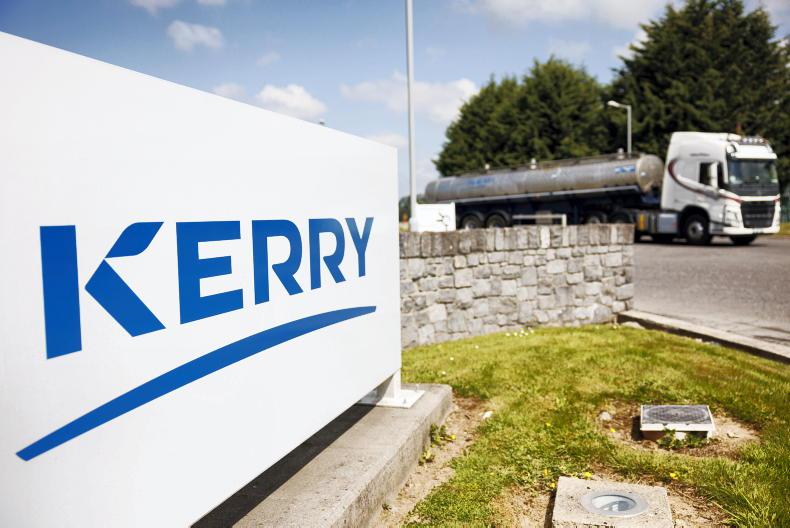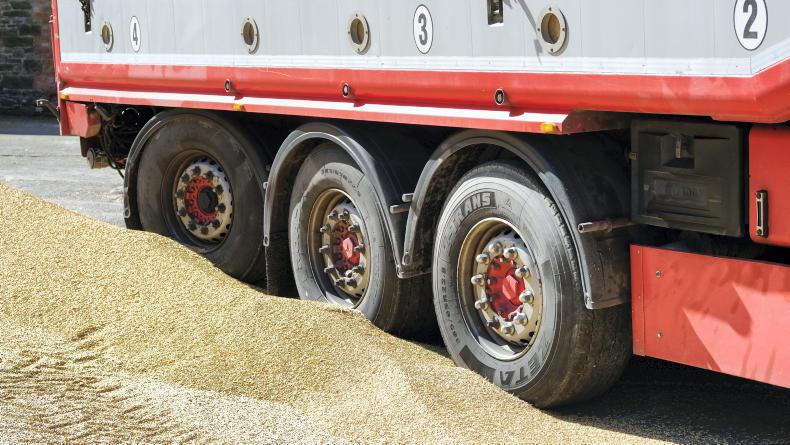An ifac-conducted survey of Kerry co-operative milk-supplying members, presented to the co-op’s advisory committee on Wednesday 21 February, showed that the vast majority of respondents think is it very or somewhat important that control over future milk processing and value-added operations lies with farmers.
Overall, 60% said the control is “very important” with 27% saying it is “somewhat important”.
Only 13% said it was not important (see Figure 1).
Among suppliers under 44 years, there was even more enthusiasm for control of processing, with over 90% saying it is somewhat or very important.
The survey, which had responses from a majority of the co-op’s 2,900 milk supplying members, is “very important in helping your co-op to make informed decisions,” Kerry Co-op chair James Tangney told members in a presentation seen by the Irish Farmers Journal.
He added that the data from the ifac survey is “part of our strategic planning process that is ongoing in relation to our current milk supply contracts in their current format with Kerry Group plc, which are coming to an end in 2026.”
Tangney also said that the work done in 2023 has “brought focus” to the board’s thinking and that proposals would be brought to members “in due course”.
Ifac noted that there was no significant variation in overall sentiment towards processor control between different counties, ie Limerick and Clare suppliers were as keen on the idea as those in Kerry.
Aside from that issue, there is a huge range of data in the results which reflect ambitions, and fears, among the cohort of farmers surveyed.
Responses
Analysis of the responses shows that over the next five years the number of dairy cows will drop by 3.5%, while the average herd size will increase from 87 to 96 cows between now and 2028 (Figure 2).
These numbers imply that there will be 12.5% fewer herds in 2028, or to put it another way, one in eight farmers in the survey will no longer be in the industry in four years’ time.
Obviously, these numbers are based on farmers’ own projections and do not take account of any further legislative constraints, such as a further nitrates derogation cut in the coming years.
Also, the size of farms right now must be taken into account.
If the farmers exiting the industry have smaller herds, then the number of exits could be higher than one in eight.
Once again, the ifac survey covers this with questions on optimism both by herd size and age of farmer.
The results are stark, with only farmers under the age of 35 and those with more than 100 cows having optimism levels above 50% (Figures 3 and 4).
Particularly striking is the almost linear relationship between optimism and cow numbers.
Ifac noted that the optimism among younger and larger farmers bodes well for milk supply in the region.
Other findings from the ifac survey
Farmers expressed concerns over the milk price and supplier fairness.Environmental issues were seen by the majority as the greatest limiting factor for milk production in the coming years.Access to land to lease or buy is also seen as a risk to expansion.Farmers are concerned about the impact of weather and climate change.Fewer than 5% of farmers plan to plant forestry as part of environmental planning.Slurry storage and solar panels were the most popular investments.The majority of suppliers said they were impacted by the portrayal of agriculture in the media and on social media. Succession is a key issue for older farmers.
An ifac-conducted survey of Kerry co-operative milk-supplying members, presented to the co-op’s advisory committee on Wednesday 21 February, showed that the vast majority of respondents think is it very or somewhat important that control over future milk processing and value-added operations lies with farmers.
Overall, 60% said the control is “very important” with 27% saying it is “somewhat important”.
Only 13% said it was not important (see Figure 1).
Among suppliers under 44 years, there was even more enthusiasm for control of processing, with over 90% saying it is somewhat or very important.
The survey, which had responses from a majority of the co-op’s 2,900 milk supplying members, is “very important in helping your co-op to make informed decisions,” Kerry Co-op chair James Tangney told members in a presentation seen by the Irish Farmers Journal.
He added that the data from the ifac survey is “part of our strategic planning process that is ongoing in relation to our current milk supply contracts in their current format with Kerry Group plc, which are coming to an end in 2026.”
Tangney also said that the work done in 2023 has “brought focus” to the board’s thinking and that proposals would be brought to members “in due course”.
Ifac noted that there was no significant variation in overall sentiment towards processor control between different counties, ie Limerick and Clare suppliers were as keen on the idea as those in Kerry.
Aside from that issue, there is a huge range of data in the results which reflect ambitions, and fears, among the cohort of farmers surveyed.
Responses
Analysis of the responses shows that over the next five years the number of dairy cows will drop by 3.5%, while the average herd size will increase from 87 to 96 cows between now and 2028 (Figure 2).
These numbers imply that there will be 12.5% fewer herds in 2028, or to put it another way, one in eight farmers in the survey will no longer be in the industry in four years’ time.
Obviously, these numbers are based on farmers’ own projections and do not take account of any further legislative constraints, such as a further nitrates derogation cut in the coming years.
Also, the size of farms right now must be taken into account.
If the farmers exiting the industry have smaller herds, then the number of exits could be higher than one in eight.
Once again, the ifac survey covers this with questions on optimism both by herd size and age of farmer.
The results are stark, with only farmers under the age of 35 and those with more than 100 cows having optimism levels above 50% (Figures 3 and 4).
Particularly striking is the almost linear relationship between optimism and cow numbers.
Ifac noted that the optimism among younger and larger farmers bodes well for milk supply in the region.
Other findings from the ifac survey
Farmers expressed concerns over the milk price and supplier fairness.Environmental issues were seen by the majority as the greatest limiting factor for milk production in the coming years.Access to land to lease or buy is also seen as a risk to expansion.Farmers are concerned about the impact of weather and climate change.Fewer than 5% of farmers plan to plant forestry as part of environmental planning.Slurry storage and solar panels were the most popular investments.The majority of suppliers said they were impacted by the portrayal of agriculture in the media and on social media. Succession is a key issue for older farmers. 









SHARING OPTIONS